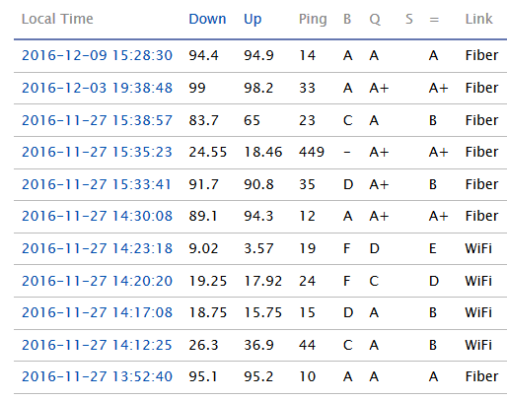... Again, I'm going to suggest actual tests with actual numbers. With a speed test, and a ping test, is the wireless connection measurably worse than wired, and if so, does the wireless connection drop a good speed down to a marginal speed? ...
I have Frontier FiOS 50/50. I just ran 2 speed tests (speedtest.net) on my laptop, one wired to the router, the other on WiFi. The router was about 3 feet from the laptop on the WiFi test. I shut down all other connected devices. Here are the results:
Wired: ping 9 ms, download 48.60 Mbps, upload 61.41 Mbps
WiFi: ping 12 ms, download 24.70 Mbps, upload 26.90 Mbps
I then walked over to the main TV (about 60 ft from the router) and ran another speedtest on Wifi. Here is the result:
WiFi: ping 17 ms, download 13.67 Mbps, upload 15.73 Mbps
That's a huge drop from 50/50, but it *should* still be adequate for streaming HD video. But keep in mind, that's a speedtest using a nearby telco server and small binary files. Actual performance streaming 1080p video plus 5.1 audio from across the country is going to be more sketchy because the path typically involves 15-20 hops. Plus I had shutdown all other devices on the network.
Suit yourself, but I know from many years of experience with multiple TV streaming set-ups that buffering is more common on Wifi vs cat5 to the router. And it's such a simple way to eliminate an unstable variable especially if you have a router nearby. I just recently helped DS run cat5 to the master bedroom in his new house because Netflix was completely un-watchable on Wifi. That fixed his problem.
Another recent example... we got back from a trip a few months ago and I hooked up the laptop to the main TV, which is where it normally resides running Kodi. DW was complaining about buffering for several days. After some troubleshooting, I realized the laptop was still in wireless mode. Even though the ethernet cable was plugged in, I had disabled that connection while we were traveling. Re-enabled it and boom, no more buffering.

